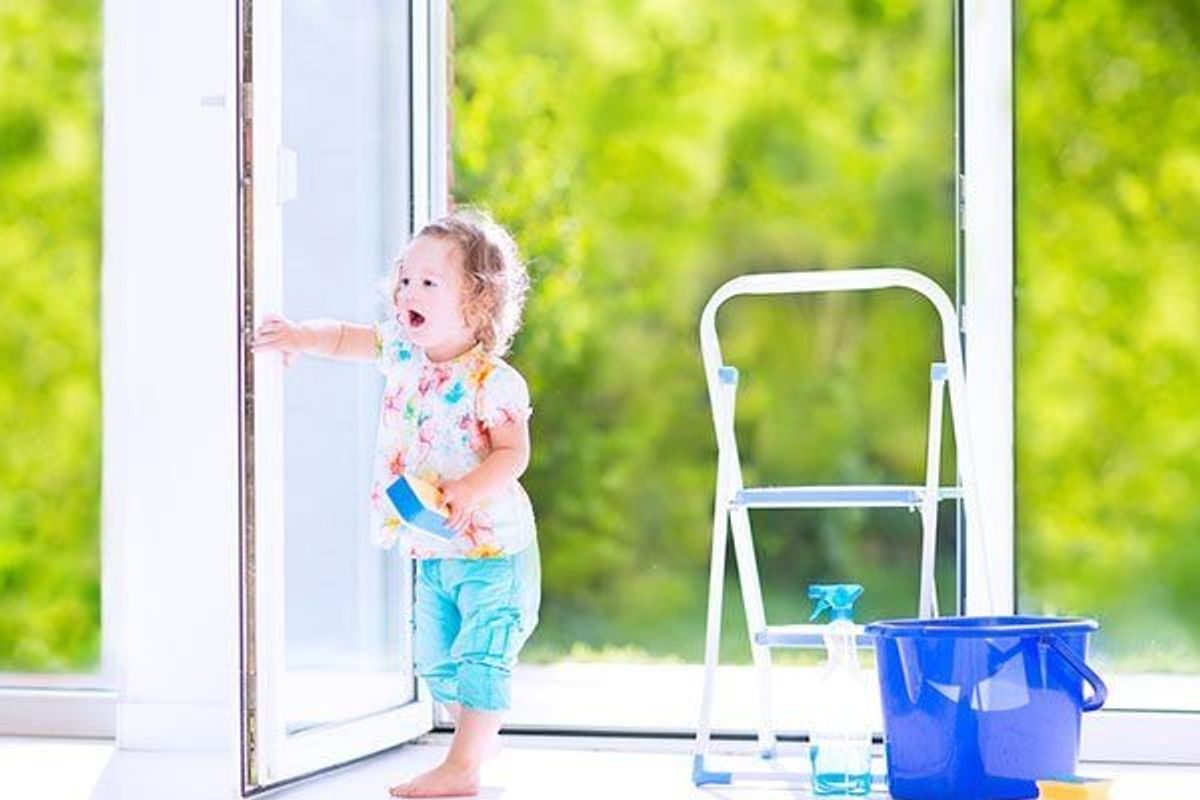
Toddlers at High Risk of Chemical Eye Burns
Children aged 1 and 2 years have relatively high rates of chemical eye burns, with everyday cleaners a common cause, researchers say.
Aug 04, 2016
Oct 19, 2023
Pregnancy & Postpartum
Learn about our editorial policies

THURSDAY, Aug. 4, 2016 (HealthDay News)—Children aged 1 and 2 years have relatively high rates of chemical eye burns, with everyday cleaners a common cause, researchers say.
The new study, based on U.S. emergency department visits at specific years of age, refutes the belief that workplace chemicals are the most common cause of these potentially blinding eye injuries.
"Household cleaners are a huge culprit," said Dr. R. Sterling Haring, who led the study. Spray bottles frequently have been implicated in other research, he said.
"The rates among 1-year-olds are 1.5 times higher than the highest rate of [eye] injury for working-age adults," said Haring, a doctoral candidate at Johns Hopkins Bloomberg School of Public Health in Baltimore.
The toddlers' injuries occur at home most often and are more common among lower-income families. They also are more common in the South, according to the analysis of 2010-2013 data from the Nationwide Emergency Department Sample.
Among 900 hospitals, the researchers found more than 144,000 ER visits related to chemical eye burns across all age groups.
"We see chemical eye injuries in the little kids all the time," said Dr. Roberto Warman, a pediatric ophthalmologist at Nicklaus Children's Hospital in Miami, who wasn't involved in the study.
"It's always the same story. They got access to the cleaners in the house. These are some extremely serious injuries," Warman said.
Overall, the investigators found working-age adults were also at risk for eye burns. When the researchers broke the data down by year of life, 24-year-olds had the highest rate among adults. Among children, 1- and 2-year-olds were injured most often, with this age group 1.5 times more likely to get an eye burn than a 24-year-old, the findings showed.
Where the type of chemical was known, alkaline injuries were more common than acid injuries. Alkaline agents are found in oven cleaners, drain cleaners, chlorine bleach and ammonia products, according to background notes in the study.
Alkaline chemicals can continue to burn into the eye even after contact with the compound, Haring explained. Damage can be blinding, he said.
Noting that workplaces generally have precautions in place for adults using chemicals, Warman and Haring agreed that parents and industry can do a better job protecting young children.
Children in lower-income homes might be left alone more often, Warman said.
And, Haring speculated, poorer families might be less likely to buy baby-proofing devices because of costs. An inexpensive safety lock can make a big difference, he noted.
Warman added that pediatricians talk about the need to keep the cleaners out of reach, but "the family gets so much information at one time, they don't retain [all of it]."
Haring's advice: Never keep household chemicals under the sink. "It's a terrible idea, even with a lock," he said.
Instead, store all cleaning supplies and other potentially harmful products "in a lockable cabinet out of reach," he said. Supervise their use if, for instance, older children are using them. Also, be sure to turn the spray bottle nozzles to the "off" position before storing them, Haring advised.
In addition, Warman said, "The industry can also help us more. They can make [caps] in a way that they are harder and harder to open."
Haring suggested that a simple change to spray bottles that automatically lock them after each use would be ideal.
Even with precautions, however, chemicals might sometimes get into the eye. If that happens, run tap water over the eye for a while, Haring said. Emergency room doctors usually rinse the child's eye with saline for 20 minutes or more, often after applying antiseptic eye drops to reduce the pain, according to information from Boston Children's Hospital.
The study was published online Aug. 4 in JAMA Ophthalmology.
SOURCES: R. Sterling Haring, D.O., M.P.H., doctoral candidate, Johns Hopkins University Bloomberg School of Public Health, Baltimore; Roberto Warman, M.D., pediatric ophthalmologist and neuro-ophthalmologist and director of ophthalmology, Nicklaus Children's Hospital, Miami; Aug. 4, 2016, JAMA Ophthalmology, online
Copyright © 2016 HealthDay. All rights reserved.
Published: August 2016